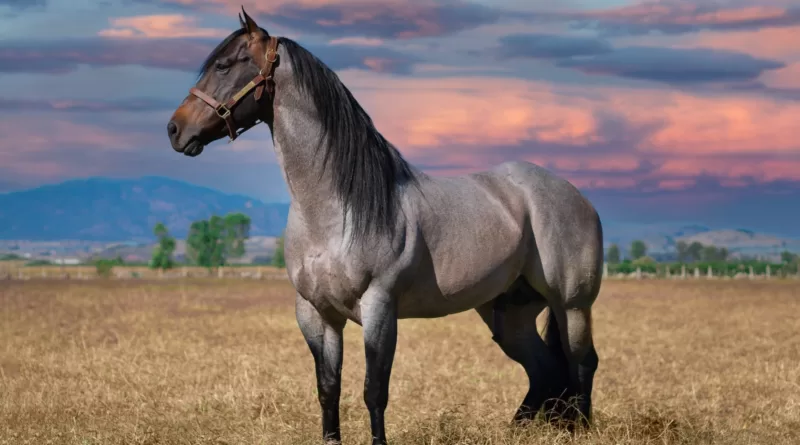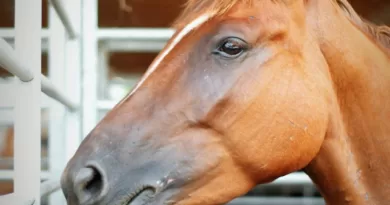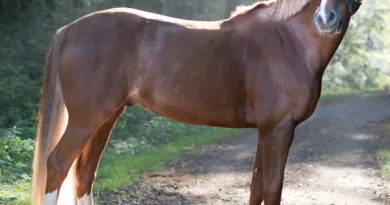How to Build a Horse Stall
Understanding the Basics of Horse Stall Construction
When it comes to horse stall construction, there are several key aspects that need to be considered. First and foremost, you need to choose the right location for your horse stall. This includes finding a suitable area on your property that is easily accessible and provides enough space for the horse to move around comfortably. Additionally, it is crucial to select a spot that has proper drainage to prevent any potential issues with water accumulation. Once you have determined the location, the next step is to design a functional and safe layout for your horse stall. This involves carefully planning the size of the stall, as well as the placement of walls, partitions, doors, and windows. These elements should be strategically positioned to provide the horse with ample room to maneuver, while also ensuring their safety and security within the stall.
Selecting the Right Location for Your Horse Stall
The location of your horse stall is a crucial factor to consider when embarking on this construction project. It is important to select a site that provides convenience, safety, and comfort for both you and your horse. Firstly, you should choose an area that is easily accessible to ensure efficient and convenient daily care for your horse. The location should allow for easy transportation of feed, water, and equipment, as well as provide quick access to pastures or riding areas.
In addition to accessibility, safety is of utmost importance when selecting the right location for your horse stall. Look for an area that is away from busy roads or high-traffic areas to minimize the risk of accidents or distractions for your horse. Avoid areas prone to flooding or with poor drainage, as these can create hazardous conditions for your horse. Furthermore, consider the terrain of the site to ensure it is level and stable, providing a secure foundation for the stall structure.
By carefully considering the accessibility and safety of the location, you can create a comfortable and stress-free environment for your horse. However, keep in mind that local regulations and zoning restrictions may also influence the location choice. Check with your local authorities to ensure compliance with any relevant guidelines or permits required for building a horse stall in your area. With the right location in mind, you can move on to the next step of designing a functional and safe horse stall layout.
Designing a Functional and Safe Horse Stall Layout
Creating a functional and safe horse stall layout is essential for the comfort and well-being of your horse. The layout should provide enough space for the horse to move around comfortably, as well as separate areas for feeding and resting. It is also important to consider the safety aspects, such as avoiding any sharp edges or protruding objects that could potentially harm the horse.
When designing the layout of your horse stall, consider the size and breed of your horse, as well as their specific needs and behaviors. Generally, a minimum stall size of 12×12 feet is recommended for an average-sized horse, but larger breeds may require more space. It is important to allow ample room for the horse to turn around, lie down, and stretch their legs comfortably.
In addition to the size, consider the placement of the feed and water buckets or troughs. These should be situated in an area where the horse can easily access them without risk of injury. It is also a good idea to have a separate area for hay storage to keep it clean and prevent wastage.
Furthermore, think about dividing the stall into different sections, such as a separate feeding area and a rest area. This can be achieved by using partitions or fencing materials that are safe, sturdy, and easy to clean. By creating these separate areas, you can help reduce the risk of your horse getting injured while eating or resting.
In conclusion, designing a functional and safe horse stall layout requires careful consideration of the horse’s size, breed, and specific needs. By providing enough space, separating feeding and resting areas, and using safe materials, you can create a comfortable and secure environment for your horse.
Choosing the Appropriate Materials for Your Horse Stall
When it comes to choosing materials for your horse stall, there are several factors to consider. First and foremost, you want to select materials that are durable and able to withstand the wear and tear of daily use. This includes materials for the walls, partitions, and doors of the stall. Options such as heavy-duty lumber or metal are often chosen for their strength and longevity. It is important to ensure that the chosen materials are safe for horses, with no sharp edges or protrusions that could potentially injure them. Additionally, you may want to consider materials that are easy to clean and maintain, as this will make your job much easier in the long run.
Another important consideration is the flooring material for your horse stall. The flooring needs to provide a comfortable and safe surface for your horse to stand on. Many horse owners opt for materials that are non-slip and provide good traction, reducing the risk of slips and falls. Popular choices for stall flooring include rubber mats, gravel, or concrete with a textured finish. Each option has its pros and cons, so be sure to assess your horse’s needs and your own preferences when making a decision. Ultimately, choosing the appropriate materials for your horse stall will create a safe and comfortable environment for your horse to thrive in.
Preparing the Ground and Foundation for Your Horse Stall
One of the most crucial steps in constructing a horse stall is preparing the ground and foundation. Proper preparation ensures that the stall is stable, safe, and comfortable for the horse. Before starting any construction work, it is important to clear the area of debris and vegetation. This includes removing any rocks, roots, or other obstructions that may affect the stability of the stall. Additionally, the ground should be leveled to ensure an even surface for the foundation. This can be done by using a shovel or a tractor to remove excess soil and fill in any low spots. Once the ground is cleared and leveled, it is essential to compact the soil to create a solid foundation. This can be achieved by using a compactor or a roller to firmly pack the soil. A compacted foundation provides stability and prevents the ground from shifting or settling, ensuring the long-term integrity of the horse stall.
After preparing the ground, the next step is to lay the foundation for the horse stall. The foundation acts as a base for the stall walls and supports the weight of the structure. The most common foundation materials for horse stalls include concrete and gravel. Concrete provides a durable and stable foundation, but it can be costly and time-consuming to install. On the other hand, gravel is a more affordable and quicker option. It is important to choose the appropriate foundation material based on budget, availability, and personal preference. Once the foundation material is selected, it should be spread evenly and compacted to create a solid base. This will ensure that the stall walls are properly supported and the overall structure is secure. Taking the time to prepare the ground and foundation is essential for the long-term durability and safety of the horse stall.
Constructing the Walls and Partitions of Your Horse Stall
When constructing the walls and partitions of your horse stall, it is important to prioritize safety and functionality. The walls should be sturdy and built to withstand the horse’s weight and any potential impacts. Common materials used for the walls include wood, metal, and concrete. Wood is a popular choice due to its durability and aesthetic appeal. Metal panels are another option, providing strength and easy maintenance. Concrete walls are incredibly durable, but may be more costly to install. It is crucial to ensure that the walls are secured properly, with appropriate anchors and fasteners, to prevent any potential accidents or injuries to the horse.
In addition to the walls, partitions within the horse stall can help organize and separate different areas. These partitions can be built using similar materials as the walls, but should be designed with consideration for the comfort and safety of the horse. The height of the partitions should allow for proper ventilation and light transmission, while also preventing any risk of injury. It is also important to ensure that the partitions are sturdy and securely installed, to prevent any accidental collapse or breakage. When constructing the walls and partitions of your horse stall, it is essential to prioritize the well-being and safety of your horse.
Installing the Doors and Windows in Your Horse Stall
When it comes to installing doors and windows in your horse stall, there are several factors to consider. First and foremost, you want to ensure that the doors and windows are secure and will not pose any safety risks to your horse. It is important to choose doors and windows that are made of durable materials, such as steel or heavy-duty wood, to withstand the wear and tear of daily use.
In terms of design, it is crucial to choose doors and windows that provide adequate ventilation and natural lighting for your horse. Ventilation is essential to prevent the buildup of moisture and odors in the stall, which can lead to respiratory issues for your horse. Windows with adjustable openings or slats can allow for proper airflow, while doors with mesh or small openings can also promote air circulation. Additionally, having windows that allow natural light to enter the stall can create a more pleasant environment for your horse, as well as save on energy costs during daytime hours.
Providing Proper Ventilation and Lighting in Your Horse Stall
Good ventilation is essential for maintaining a healthy and comfortable environment in your horse stall. Proper airflow helps to remove moisture, odors, and dust, and also helps to regulate temperature. When designing your horse stall, it is important to consider the placement of windows, vents, and doors to ensure adequate ventilation. Windows should be positioned to allow for natural light and airflow, while vents can be installed near the ceiling to promote better air circulation. Additionally, consider using materials such as wire mesh or slatted walls to allow for more air exchange between adjoining stalls.
In addition to ventilation, adequate lighting is crucial for the well-being of your horse. A well-lit horse stall not only allows you to see your horse clearly, but it can also create a safer environment by reducing the risk of accidents. Natural light is ideal, as it provides a more natural and soothing atmosphere. If possible, position the stall windows or doors to allow for natural sunlight to enter during the day. For nighttime illumination, consider installing overhead lights that provide sufficient brightness without causing glare or shadows. This will ensure that your horse feels comfortable and secure in their stall regardless of the time of day.
Installing the Flooring and Bedding in Your Horse Stall
One of the final steps in constructing a functional and safe horse stall is installing the flooring and bedding. The choice of flooring material is crucial to ensure the comfort and well-being of your horse, as well as easy maintenance. There are various options available, including concrete, rubber mats, and packed clay or gravel. Concrete provides durability and ease of cleaning, but it can be hard on your horse’s joints. Rubber mats offer cushioning and traction, reducing the risk of slips and injuries. Packed clay or gravel is a more natural option, providing good drainage and a soft surface for your horse to stand on.
Once you have selected the appropriate flooring material, it’s time to add the bedding. The bedding is essential for your horse’s comfort, as well as for absorbing moisture and controlling odors. Popular bedding options include straw, wood shavings, and pelleted bedding. Straw is inexpensive and readily available, but it can be dusty and difficult to clean. Wood shavings provide good cushioning and absorbency, but they can be more expensive. Pelleted bedding is a convenient choice, as it expands when wet and absorbs moisture effectively. Regardless of the bedding material you choose, it’s important to maintain a clean and dry environment for your horse’s health and well-being.
Adding the Final Touches and Maintenance of Your Horse Stall
Once the construction of your horse stall is complete, it is important to pay attention to the final touches and ongoing maintenance to ensure the safety and comfort of your equine companion. The final touches include the installation of essential fixtures such as feeders, waterers, and hooks for tack and equipment storage. These fixtures should be carefully chosen and installed to prevent any potential hazards or inconvenience for both you and your horse.
Regular maintenance is crucial to keep your horse stall in optimal condition. Daily tasks such as removing manure and soiled bedding will help maintain a clean and hygienic environment for your horse. Additionally, regular inspections of the walls, partitions, doors, and windows should be conducted to check for any signs of wear and tear or damage that may compromise the safety of your horse. Furthermore, proper ventilation and lighting should be maintained to ensure a healthy and comfortable living space for your horse. By paying attention to these final touches and committing to regular maintenance, you can provide your horse with a safe and functional stall that promotes their well-being.
How important is it to choose the right location for a horse stall?
Selecting the right location for a horse stall is crucial as it can affect the safety and comfort of the horse. It should be an area with good drainage, away from high traffic and noise, and easily accessible for feeding, cleaning, and veterinary care.
What are the key factors to consider when designing a horse stall layout?
When designing a horse stall layout, it is essential to consider factors such as proper ventilation, space for the horse to move comfortably, easy access to feed and water, and the placement of doors and windows for natural light and visibility.
What materials are suitable for constructing a horse stall?
Common materials used for constructing horse stalls include wood, metal, and PVC. The material chosen should be sturdy, durable, and safe for horses, with no sharp edges or loose parts that could cause injury.
How should the ground and foundation be prepared for a horse stall?
The ground and foundation should be leveled, free from debris, and well-drained. It is recommended to use a layer of crushed stone or gravel as a base to promote proper drainage and prevent mud.
What are the recommended methods for constructing walls and partitions in a horse stall?
Walls and partitions can be constructed using materials like wood, metal panels, or PVC boards. They should be secure, smooth, and tall enough to prevent the horse from leaning or jumping over. Adequate spacing between boards or bars is necessary to prevent entrapment or injury.
Why is proper ventilation and lighting important in a horse stall?
Proper ventilation helps maintain fresh air quality, reduces moisture buildup, and prevents the spread of respiratory diseases. Ample natural or artificial lighting is essential for the horse’s well-being and allows for easier monitoring and cleaning of the stall.
What type of flooring and bedding should be used in a horse stall?
Common flooring options include rubber mats, crushed stone or gravel, and concrete. These should be non-slip and provide adequate cushioning. Bedding materials like straw, shavings, or wood pellets are used to provide comfort, absorb moisture, and control odor.
What are some final touches that can be added to a horse stall?
Final touches may include adding feed and water buckets, securing hay racks or nets, installing hooks for tack storage, and placing rubber feed mats. Personalizing the stall with the horse’s name or adding soft padding to the walls are also options.
How should a horse stall be maintained for optimal hygiene and safety?
Regular cleaning of the stall is necessary to remove manure, soiled bedding, and debris. It is important to check for loose or damaged parts, repair any structural issues, and ensure proper drainage to prevent the buildup of stagnant water or mold. Regular inspections and maintenance of doors, windows, and ventilation systems are also recommended.




